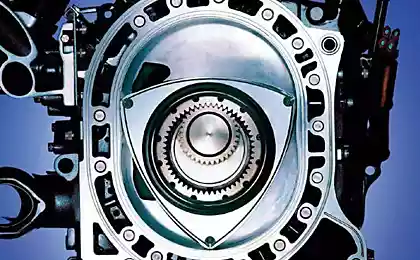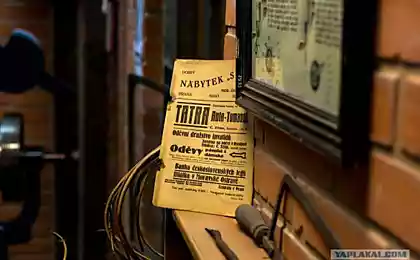1177
As it was ... or thank you "inventors"
How were born or that invention? Read!
For half of humanity. The razor
Gillette had often shave trains. It was very risky because of the shaking at the junctions of the rails straight razor could easily cut your throat. Gillette razor used the Star Safety Razor, made in the style of choppers: the handle was attached perpendicularly to the massive blade. Razor quickly blunted, and has to be part of the rules. In 1895, Gillette came up with a simple idea: to use instead of the massive blade thin steel strips which the loss of sharpness you could just throw away.
With this idea, he turned to metallurgy Massachusetts Institute of Technology (MIT), and they assured him that it was absolutely impossible. But Gillette did not give up and together with engineer William Nickerson (ironically - a graduate of MIT) for six years developing design shaving razor blades and the technology of their release. In 1901, Gillette and Nickerson founded the American Safety Razor Company, and two years later began mass production. Moreover, to create a market, first they even had to sell goods below cost.
In 1904, King Camp Gillette received a patent for his invention, and the company was renamed Gillette Safety Razor Company. After this strong half of mankind learned inventor razor not only by name, but in the face: each package with blades Gillette printed portrait of King Gillette.
From: www.dwmedia.ru/index.php?newsid=1126
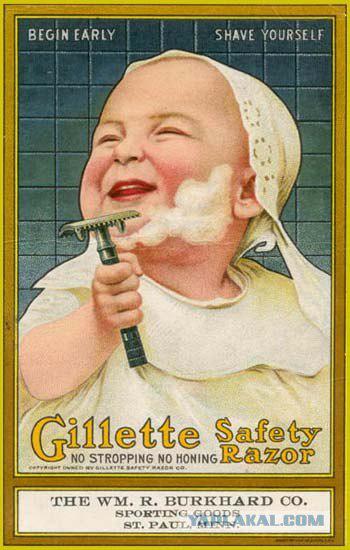
Joy travelers. Bags with wheels
In 1970-1980-ies the world swept thirst "to change places." But travelers were not easy - in the literal sense of the word: a hefty part of the road had to drag luggage in their hands or on yourself.
For their plight share one of the world's largest manufacturer of travel bags, the company Samsonite, in 1974, patented the design of a suitcase with wheels arranged in one corner of the plastic housing. Pulling the handle on the other hand, such a case can be rolled in a tilted position. But the popularity of this particular case is not won (although it is produced until now): cornering or irregularities, he collapses on his side and also not placed on the top shelf in the cabin airliner. 46-year-old pilot of Northwest Airlines American Robert Plath fully experience for yourself the difficult burden of the traveler.
He never thought of himself as an inventor and even could not assume that his decision to literally change the world. In 1988 in his garage in the town of Boca Raton, Florida Platt fastened to his beloved vertical bag two small wheels furniture bought in the nearest hardware store. To the side of the bag it is sewn pocket masking retractable handle made of metal rods and tubes. Field (or flight) tests have confirmed all the best qualities of ideas fee. Pilots and flight attendants looked at an unusual design with unconcealed surprise that some time later grew into jealousy. A few days later one of his colleagues turned to Robert with a request to upgrade his bag (of course, not free). Then another. When the number of orders has exceeded a dozen, the board began to give to colleagues, leads him to the next customer, "commission" in the form of a $ 5 discount on your next purchase. In 1989, Platt filed a patent application for the "travel bag equipped with wheels and a retractable handle," he called Rollaboard. In the same year, Plath founded Travelpro, and in 1991, when the patent number 4995487 was registered, he resigned from the airline. Looking for pilots and flight attendants, easily rolling their bags down the aisles airports, passengers also began to wonder where you can buy a "miracle of technology". Demand was so high that even in the first year of its existence the company Travelpro bag sold for $ 1, 5 million.! And by 1999, when the board is retired and sold his stake in the company, sales were $ 50 million. The invention Robert board changed the world of travel: few people today goes on a journey without traveling bag or suitcase on wheels. Travelpro products proved so popular that the airlines were forced to even increase the top shelves in airplanes. The only ones who lost their appearance, become porters - today with their hard work built an excellent job in a suitcase or bag wheels ...
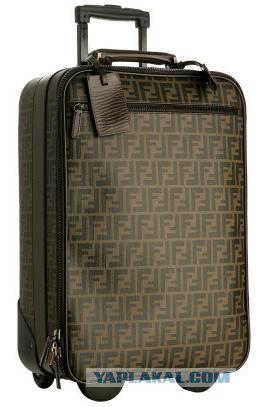
Flick of the wrist. Pull the ring
Bank of the valve and the ring - the invention, to make life easier not only for lovers of beer.
Erma Cleon Frazee was born in 1913. Youth he spent on a farm in Indiana, and in 1940 he moved to Dayton, Ohio, where he earns his living by different mechanical and painting. In 1949 he founded a small company Frazee Reliable Tool and Manufacturing Co. ("Reliable Tools and Production"), where he was the only employee. Business was not very profitable, but lives lacked. Frazee even patented some small inventions, as well as finished technical school of General Motors and received a degree in engineering. By the end of 1950 among the clients are still small companies including such giants as General Electric, Ford, Chrysler and even NASA. One day in 1959 Erma Frazee, and for friends just Ernie decided to have a picnic with family and friends. When the starter has already been sliced, and the food is ready, Ernie pulled from the trunk of one of the latest advances in technology of the time - beer, packaged in aluminum cans. Then he waited for a slight disappointment: it turned out that none of those present did not think to bring a can opener.
But Ernie is not in vain was a skilled mechanic, he quickly came up with a way to open cans with the help of available tools and car bumpers (but gets more foam than beer). But the case that he remembered - it is a trifle almost spoiled a wonderful weekend. Once, a couple of months later, Frazee, suffering from insomnia, I decided to take head any everyday problem. The case of the banks, reminded itself. Later, the inventor said: "I did not come up with self-opening cans. I just proposed a way to attach the key to the lid of the jar. " Ernie decision was simple - the key was attached to the center of the cover conventional rivets. The first option was not too successful - the key lever punched a hole in the bank with the sharp edges of which could cause injury. To solve this problem Frazee suggested weakening of the lid, making her preliminary non-through cuts. In 1963, the inventor obtained a patent and offered his company cans manufacturer Alcoa. The company took a chance and won - by 1965 more than 75% of all cans sold in the US were equipped with a key to open. In the 1970s, a system of opening cans has been improved - the key non-removable made as aluminum "tabs" with sharp edges heavily polluting. During this time the company Frazee, renamed the Dayton Reliable Tool, has become one of the leading suppliers of industrial equipment for the manufacture of cans, and by 1980 th annual income once small company has more than half a billion dollars.

Mockery cook. Potato chips
George Speck was born in 1822 in the town of Saratoga Lake, New York. His father was, as they say now, African American, and his mother - an Indian tribe of the Huron. His real name George Crum chose the pseudonym under which his father served as a jockey. In his youth, George worked as a guide, a guide in the Adirondacks, but became older, he realized that his true calling - cooking. Summer 1853, he met in the resort of Saratoga Springs as a chef luxury hotel Moon Lake Lodge. One of the specialties of the restaurant recipes was "fried potatoes in French." This dish came to America thanks to Thomas Jefferson, try the fried potatoes during his service ambassador to France.
According to legend, one of the diners was unhappy with the dish - he said to the waiter that the potato is sliced too thick slices and fry so inadequate. Angered Crum decided to stand up for his sister, who worked as his assistant and, in fact, and sliced potatoes. Having decided to make fun of the visitor, he cut potatoes into layers literally paper thickness, and then fry them in oil. To the surprise of the chief, demanding visitor was satisfied, and the other guests began to order "Saratoga Chips" (a name given to the new recipe), which soon became the most popular specialty restaurant.
In 1860, Crum opened his own restaurant - Crumbs House (worked until 1890), on each table which was a basket of chips. The restaurant quickly became a fashionable place among the visitors to the resorts of rich Americans. Krum did not sell chips "takeaway", but the recipe was so simple that a dish quickly spread around the country and has become a mandatory attribute of self-respecting restaurant.
Buy chips in the store became possible only in 1895, when William Teppendon began their "limited production" (first in your own kitchen, and later on they built a factory) and began delivering them to grocers Cleveland, where weighted chips sold. The final touch to the "construction" of chips made Laura Scudder. It is proposed to use as packaging waxed paper - so was born the concept of "a bag of chips." In 1932, Herman Lay, established in Nashville, Tennessee, brand Lay's, which was the first national brand of chips, dozhivshim to the present day.
Today every Russian consumes an average of 0, 5 kg of chips per year, European - 1-5 kg, an American - 10 kg.

Scotch, but the Scot and whiskey
The English word «scotch», first of all, means "Scottish" "Scottish". More so-called whiskey. When we say "Scotch", it usually mean Gluing (adhesive, sticky) tape.
Let's start with the fact that scotch was invented by a Scotsman or tartan, and even this does not happen in Scotland. Adhesive tape was invented in America, and that's how it was.
In 1923 a young man named Richard Drew (Richard G. Drew), a banjo player (this is why something needs to be specified), he got a job in a company engaged in the production of modest sandpaper.
The company Minnesota Mining and Manufacturing (Now the name of this major corporation decreased to 3M) it was prepared for the post of laboratory technician. Actually, with the sandpaper and it had to work. However, the research division of 3M was trying to learn new activities and develop waterproof coating, experimenting with cellophane.
Banjo player, these wrappers have been interesting, but at the moment his employer tested the shops and garages his new skins «Wetordry», and Drew was entrusted to oversee this process.
Once, while in the body shop, Richard noticed that the master engaged in painting car bodies, have difficulty: where the surface had to paint two or more colors, the dividing line is that sloppy. Although protection of one dyed plane and used paper entitled Kraft Paper, by removing these papers are separated together with the ink. In general - it was uncomfortable.
And Drew has promised painter to think of something. Some time later - in 1925, whether that year - Richard really brought this to the employee the tape width of 2 inches (5 cm) with a plaster on each edge.
"Avtozhivopisets" decided to use the prototype in the case, but when going to apply another color, notice that the tape Drew skukozhilas. Only then can the master tape carefully studied and realized that she had just glued on the edges and in the middle - not (now say that Richard did not totally sticky sample for reasons of cost).
And as in the days of the Scottish thrift - or rather, avarice, legends, the disgruntled painter in the hearts cried out, "Take this tape, send your Scotch bosses and tell them to make it more sticky!»
It is clear that no «Scotch bosses» Drew was not, but a word to the tape seemed stuck, and the inventor of the experiments continued.
In the process of improving Richard had to solve many problems, such as uniform distribution of mass on the surface of the adhesive tape, and so on. On completion it took about 5 years, and September 8, 1930 the first roll of "Scotch" cellophane tape was sent to a sample of clients in Chicago.
The answer came to him reassuring: "You can be sure not to save money by releasing it to the market. Sales volume will justify all costs ».
The world's first tape was made of rubber, resins and oils on the basis of cellophane. He was waterproof and withstand a wide range of temperatures.
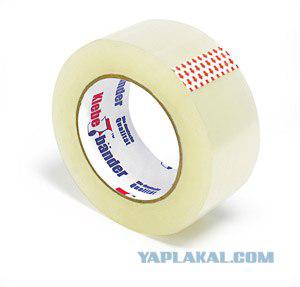
Hangers
Such a natural and familiar in today's everyday life a thing as a hanger-hanger, it is was invented relatively recently - only in 1903.
Prior to this event znametalnogo people hang clothes on hooks. However, it is not surprising patent hook for clothes was received by some OA North's only in 1869!
What to do this, people hang their stuff - is not clear.
And only in 1903, Albert Parkhouse, who worked on the wire factory, in response to the constant complaints of the workers that they do not have hooks for their coats, invented the hangers.
From the wire, he made two ovals, which are opposite each other at a distance, and their ends are connected to the hook. In 1932, these ovals joined cardboard to wet clothes do not sag and myalas.
And three years later, it was invented hanger with the bottom bracket, which became the prototype for all modern hangers.
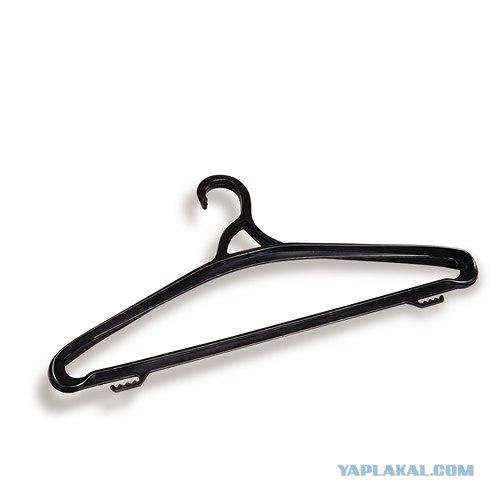
schA sing ...
When the Japanese Daisuke Inoue was a young man, and acted as a drummer in the same consisted of a band of youngsters, he certainly did not think about how important he is to make invention. And when the car came up, allowing to perform a variety of electronic music songs, singing them in the microphone, did not attach much importance to his invention and even those not bothered to patent this technique. More than three decades later, that is karaoke (in Japanese it means "music without words"), the whole world knows, and many have this useful instrument at home. However, Daisuke Inoue did not receive any income from the sale of yen they invented the machine. Now 62 hletny Japanese-owned office in a suburb of Osaka. There's the hipster type of citizen (with long hair gathered in the "tail") sells his other invention - the means to kill cockroaches karaoke because, as set Inoue, in 80 percent of the "machine for home singing" breaks just because that it settle these nasty insects.
The Japanese invented karaoke in 1971 - especially for their group performances at private parties where drunken guests are often unwilling to perform independently any composition. Primitive karaoke allows musicians at this time to rest and not persist in trying to get into rhythm with amateur singers. Musicians founded the company "Crescendo" and began trading primitive karaoke and costs one hundred yen per share (less than a dollar). Three years later, karaoke has become so popular that big companies take advantage of this, fortunately for them, unpatented idea and started to produce their own machines. It started a real boom karaoke. A small company, "Crescendo" was trying to deal with the vile industry giants, but in 1987, when the laser disks, Inoue and his comrades realized that losing.
The world is not something that is not appreciated that the Japanese: the magazine "Time" even called him once among the most influential people in Asia, along with Mahatma Gandhi and Mao Zedong. But beyond that it does not matter. Daisuke Inoue about his might-triumphs and lost untold riches stoically. And to karaoke he, like 30 years ago, cold. He says he tried to sing along with the car's own invention, only 4 or 5 times in my life. "Sometimes, - he said the Japanese - I look at a modern karaoke and think," Oh, what an amazing technique. " But to me personally, this is not a completely irrelevant. "

sax ... ofon.
His father, Charles Joseph Sax was a famous master of wind instruments, a self-taught. We produce them clarinet and bassoon were of such high quality that in 1820 he was appointed court music master, and since then he has received many diplomas and medals, more than a dozen patents. Musical ability and interest in designing the master passed on to children, and most of all the eldest of eleven children - Adolf (Antoine Joseph).
In 1836 Sachs emigrated from Belgium to France. He has a lot of followers and no less enemies. In 1842, Adolphe Sax in Paris opened a factory of wind instruments, where he became widely known as the inventor and designer.
Adolphe Sax perfected almost all wind instruments known to mankind. He created a whole group of tools for military brass bands "saxhorn».
World fame brought the invention of the saxophone. Adolphe Sax, took the clarinet, replaced the wood with metal, more convenient mouthpiece adapted and changed section making tool extends downward, providing a new tool and a more progressive goboynoy flute fingering. The patent for the saxophone received June 23, 1846.
In the five months to obtain a patent Sachs lost a court case - he was accused of "fraud and falsification." It preserved the court's decision, which states that "a musical instrument called the saxophone does not exist and can not exist».
The leading French composers enthusiastically responded to the new feature. Since 1857, Adolf Sachs led the saxophone at the Paris Conservatory and published manuals on school play on all the instruments he invented.
Soon, however, Sachs was the victim of unfair competition.
Source:
For half of humanity. The razor
Gillette had often shave trains. It was very risky because of the shaking at the junctions of the rails straight razor could easily cut your throat. Gillette razor used the Star Safety Razor, made in the style of choppers: the handle was attached perpendicularly to the massive blade. Razor quickly blunted, and has to be part of the rules. In 1895, Gillette came up with a simple idea: to use instead of the massive blade thin steel strips which the loss of sharpness you could just throw away.
With this idea, he turned to metallurgy Massachusetts Institute of Technology (MIT), and they assured him that it was absolutely impossible. But Gillette did not give up and together with engineer William Nickerson (ironically - a graduate of MIT) for six years developing design shaving razor blades and the technology of their release. In 1901, Gillette and Nickerson founded the American Safety Razor Company, and two years later began mass production. Moreover, to create a market, first they even had to sell goods below cost.
In 1904, King Camp Gillette received a patent for his invention, and the company was renamed Gillette Safety Razor Company. After this strong half of mankind learned inventor razor not only by name, but in the face: each package with blades Gillette printed portrait of King Gillette.
From: www.dwmedia.ru/index.php?newsid=1126

Joy travelers. Bags with wheels
In 1970-1980-ies the world swept thirst "to change places." But travelers were not easy - in the literal sense of the word: a hefty part of the road had to drag luggage in their hands or on yourself.
For their plight share one of the world's largest manufacturer of travel bags, the company Samsonite, in 1974, patented the design of a suitcase with wheels arranged in one corner of the plastic housing. Pulling the handle on the other hand, such a case can be rolled in a tilted position. But the popularity of this particular case is not won (although it is produced until now): cornering or irregularities, he collapses on his side and also not placed on the top shelf in the cabin airliner. 46-year-old pilot of Northwest Airlines American Robert Plath fully experience for yourself the difficult burden of the traveler.
He never thought of himself as an inventor and even could not assume that his decision to literally change the world. In 1988 in his garage in the town of Boca Raton, Florida Platt fastened to his beloved vertical bag two small wheels furniture bought in the nearest hardware store. To the side of the bag it is sewn pocket masking retractable handle made of metal rods and tubes. Field (or flight) tests have confirmed all the best qualities of ideas fee. Pilots and flight attendants looked at an unusual design with unconcealed surprise that some time later grew into jealousy. A few days later one of his colleagues turned to Robert with a request to upgrade his bag (of course, not free). Then another. When the number of orders has exceeded a dozen, the board began to give to colleagues, leads him to the next customer, "commission" in the form of a $ 5 discount on your next purchase. In 1989, Platt filed a patent application for the "travel bag equipped with wheels and a retractable handle," he called Rollaboard. In the same year, Plath founded Travelpro, and in 1991, when the patent number 4995487 was registered, he resigned from the airline. Looking for pilots and flight attendants, easily rolling their bags down the aisles airports, passengers also began to wonder where you can buy a "miracle of technology". Demand was so high that even in the first year of its existence the company Travelpro bag sold for $ 1, 5 million.! And by 1999, when the board is retired and sold his stake in the company, sales were $ 50 million. The invention Robert board changed the world of travel: few people today goes on a journey without traveling bag or suitcase on wheels. Travelpro products proved so popular that the airlines were forced to even increase the top shelves in airplanes. The only ones who lost their appearance, become porters - today with their hard work built an excellent job in a suitcase or bag wheels ...

Flick of the wrist. Pull the ring
Bank of the valve and the ring - the invention, to make life easier not only for lovers of beer.
Erma Cleon Frazee was born in 1913. Youth he spent on a farm in Indiana, and in 1940 he moved to Dayton, Ohio, where he earns his living by different mechanical and painting. In 1949 he founded a small company Frazee Reliable Tool and Manufacturing Co. ("Reliable Tools and Production"), where he was the only employee. Business was not very profitable, but lives lacked. Frazee even patented some small inventions, as well as finished technical school of General Motors and received a degree in engineering. By the end of 1950 among the clients are still small companies including such giants as General Electric, Ford, Chrysler and even NASA. One day in 1959 Erma Frazee, and for friends just Ernie decided to have a picnic with family and friends. When the starter has already been sliced, and the food is ready, Ernie pulled from the trunk of one of the latest advances in technology of the time - beer, packaged in aluminum cans. Then he waited for a slight disappointment: it turned out that none of those present did not think to bring a can opener.
But Ernie is not in vain was a skilled mechanic, he quickly came up with a way to open cans with the help of available tools and car bumpers (but gets more foam than beer). But the case that he remembered - it is a trifle almost spoiled a wonderful weekend. Once, a couple of months later, Frazee, suffering from insomnia, I decided to take head any everyday problem. The case of the banks, reminded itself. Later, the inventor said: "I did not come up with self-opening cans. I just proposed a way to attach the key to the lid of the jar. " Ernie decision was simple - the key was attached to the center of the cover conventional rivets. The first option was not too successful - the key lever punched a hole in the bank with the sharp edges of which could cause injury. To solve this problem Frazee suggested weakening of the lid, making her preliminary non-through cuts. In 1963, the inventor obtained a patent and offered his company cans manufacturer Alcoa. The company took a chance and won - by 1965 more than 75% of all cans sold in the US were equipped with a key to open. In the 1970s, a system of opening cans has been improved - the key non-removable made as aluminum "tabs" with sharp edges heavily polluting. During this time the company Frazee, renamed the Dayton Reliable Tool, has become one of the leading suppliers of industrial equipment for the manufacture of cans, and by 1980 th annual income once small company has more than half a billion dollars.

Mockery cook. Potato chips
George Speck was born in 1822 in the town of Saratoga Lake, New York. His father was, as they say now, African American, and his mother - an Indian tribe of the Huron. His real name George Crum chose the pseudonym under which his father served as a jockey. In his youth, George worked as a guide, a guide in the Adirondacks, but became older, he realized that his true calling - cooking. Summer 1853, he met in the resort of Saratoga Springs as a chef luxury hotel Moon Lake Lodge. One of the specialties of the restaurant recipes was "fried potatoes in French." This dish came to America thanks to Thomas Jefferson, try the fried potatoes during his service ambassador to France.
According to legend, one of the diners was unhappy with the dish - he said to the waiter that the potato is sliced too thick slices and fry so inadequate. Angered Crum decided to stand up for his sister, who worked as his assistant and, in fact, and sliced potatoes. Having decided to make fun of the visitor, he cut potatoes into layers literally paper thickness, and then fry them in oil. To the surprise of the chief, demanding visitor was satisfied, and the other guests began to order "Saratoga Chips" (a name given to the new recipe), which soon became the most popular specialty restaurant.
In 1860, Crum opened his own restaurant - Crumbs House (worked until 1890), on each table which was a basket of chips. The restaurant quickly became a fashionable place among the visitors to the resorts of rich Americans. Krum did not sell chips "takeaway", but the recipe was so simple that a dish quickly spread around the country and has become a mandatory attribute of self-respecting restaurant.
Buy chips in the store became possible only in 1895, when William Teppendon began their "limited production" (first in your own kitchen, and later on they built a factory) and began delivering them to grocers Cleveland, where weighted chips sold. The final touch to the "construction" of chips made Laura Scudder. It is proposed to use as packaging waxed paper - so was born the concept of "a bag of chips." In 1932, Herman Lay, established in Nashville, Tennessee, brand Lay's, which was the first national brand of chips, dozhivshim to the present day.
Today every Russian consumes an average of 0, 5 kg of chips per year, European - 1-5 kg, an American - 10 kg.

Scotch, but the Scot and whiskey
The English word «scotch», first of all, means "Scottish" "Scottish". More so-called whiskey. When we say "Scotch", it usually mean Gluing (adhesive, sticky) tape.
Let's start with the fact that scotch was invented by a Scotsman or tartan, and even this does not happen in Scotland. Adhesive tape was invented in America, and that's how it was.
In 1923 a young man named Richard Drew (Richard G. Drew), a banjo player (this is why something needs to be specified), he got a job in a company engaged in the production of modest sandpaper.
The company Minnesota Mining and Manufacturing (Now the name of this major corporation decreased to 3M) it was prepared for the post of laboratory technician. Actually, with the sandpaper and it had to work. However, the research division of 3M was trying to learn new activities and develop waterproof coating, experimenting with cellophane.
Banjo player, these wrappers have been interesting, but at the moment his employer tested the shops and garages his new skins «Wetordry», and Drew was entrusted to oversee this process.
Once, while in the body shop, Richard noticed that the master engaged in painting car bodies, have difficulty: where the surface had to paint two or more colors, the dividing line is that sloppy. Although protection of one dyed plane and used paper entitled Kraft Paper, by removing these papers are separated together with the ink. In general - it was uncomfortable.
And Drew has promised painter to think of something. Some time later - in 1925, whether that year - Richard really brought this to the employee the tape width of 2 inches (5 cm) with a plaster on each edge.
"Avtozhivopisets" decided to use the prototype in the case, but when going to apply another color, notice that the tape Drew skukozhilas. Only then can the master tape carefully studied and realized that she had just glued on the edges and in the middle - not (now say that Richard did not totally sticky sample for reasons of cost).
And as in the days of the Scottish thrift - or rather, avarice, legends, the disgruntled painter in the hearts cried out, "Take this tape, send your Scotch bosses and tell them to make it more sticky!»
It is clear that no «Scotch bosses» Drew was not, but a word to the tape seemed stuck, and the inventor of the experiments continued.
In the process of improving Richard had to solve many problems, such as uniform distribution of mass on the surface of the adhesive tape, and so on. On completion it took about 5 years, and September 8, 1930 the first roll of "Scotch" cellophane tape was sent to a sample of clients in Chicago.
The answer came to him reassuring: "You can be sure not to save money by releasing it to the market. Sales volume will justify all costs ».
The world's first tape was made of rubber, resins and oils on the basis of cellophane. He was waterproof and withstand a wide range of temperatures.

Hangers
Such a natural and familiar in today's everyday life a thing as a hanger-hanger, it is was invented relatively recently - only in 1903.
Prior to this event znametalnogo people hang clothes on hooks. However, it is not surprising patent hook for clothes was received by some OA North's only in 1869!
What to do this, people hang their stuff - is not clear.
And only in 1903, Albert Parkhouse, who worked on the wire factory, in response to the constant complaints of the workers that they do not have hooks for their coats, invented the hangers.
From the wire, he made two ovals, which are opposite each other at a distance, and their ends are connected to the hook. In 1932, these ovals joined cardboard to wet clothes do not sag and myalas.
And three years later, it was invented hanger with the bottom bracket, which became the prototype for all modern hangers.

schA sing ...
When the Japanese Daisuke Inoue was a young man, and acted as a drummer in the same consisted of a band of youngsters, he certainly did not think about how important he is to make invention. And when the car came up, allowing to perform a variety of electronic music songs, singing them in the microphone, did not attach much importance to his invention and even those not bothered to patent this technique. More than three decades later, that is karaoke (in Japanese it means "music without words"), the whole world knows, and many have this useful instrument at home. However, Daisuke Inoue did not receive any income from the sale of yen they invented the machine. Now 62 hletny Japanese-owned office in a suburb of Osaka. There's the hipster type of citizen (with long hair gathered in the "tail") sells his other invention - the means to kill cockroaches karaoke because, as set Inoue, in 80 percent of the "machine for home singing" breaks just because that it settle these nasty insects.
The Japanese invented karaoke in 1971 - especially for their group performances at private parties where drunken guests are often unwilling to perform independently any composition. Primitive karaoke allows musicians at this time to rest and not persist in trying to get into rhythm with amateur singers. Musicians founded the company "Crescendo" and began trading primitive karaoke and costs one hundred yen per share (less than a dollar). Three years later, karaoke has become so popular that big companies take advantage of this, fortunately for them, unpatented idea and started to produce their own machines. It started a real boom karaoke. A small company, "Crescendo" was trying to deal with the vile industry giants, but in 1987, when the laser disks, Inoue and his comrades realized that losing.
The world is not something that is not appreciated that the Japanese: the magazine "Time" even called him once among the most influential people in Asia, along with Mahatma Gandhi and Mao Zedong. But beyond that it does not matter. Daisuke Inoue about his might-triumphs and lost untold riches stoically. And to karaoke he, like 30 years ago, cold. He says he tried to sing along with the car's own invention, only 4 or 5 times in my life. "Sometimes, - he said the Japanese - I look at a modern karaoke and think," Oh, what an amazing technique. " But to me personally, this is not a completely irrelevant. "

sax ... ofon.
His father, Charles Joseph Sax was a famous master of wind instruments, a self-taught. We produce them clarinet and bassoon were of such high quality that in 1820 he was appointed court music master, and since then he has received many diplomas and medals, more than a dozen patents. Musical ability and interest in designing the master passed on to children, and most of all the eldest of eleven children - Adolf (Antoine Joseph).
In 1836 Sachs emigrated from Belgium to France. He has a lot of followers and no less enemies. In 1842, Adolphe Sax in Paris opened a factory of wind instruments, where he became widely known as the inventor and designer.
Adolphe Sax perfected almost all wind instruments known to mankind. He created a whole group of tools for military brass bands "saxhorn».
World fame brought the invention of the saxophone. Adolphe Sax, took the clarinet, replaced the wood with metal, more convenient mouthpiece adapted and changed section making tool extends downward, providing a new tool and a more progressive goboynoy flute fingering. The patent for the saxophone received June 23, 1846.
In the five months to obtain a patent Sachs lost a court case - he was accused of "fraud and falsification." It preserved the court's decision, which states that "a musical instrument called the saxophone does not exist and can not exist».
The leading French composers enthusiastically responded to the new feature. Since 1857, Adolf Sachs led the saxophone at the Paris Conservatory and published manuals on school play on all the instruments he invented.
Soon, however, Sachs was the victim of unfair competition.
Source:















